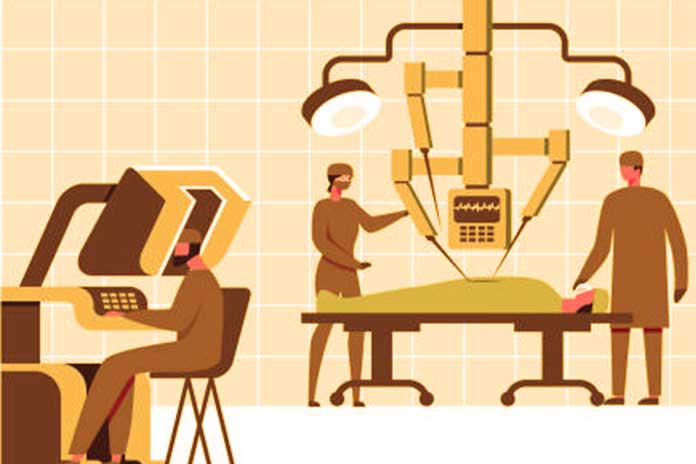Anyone who decides to use an industrial robot in their company may ask themselves another question: It’s great that the robots can be used for many different work areas, but how can I manage to deal with them? How is such a robot operated? For laypersons, the image emerges of opening a flap, standing in front of the robot’s innards, and staring helplessly at a colorful tangle of cables.
While this is often portrayed in films, it is not to be expected in the real world with industrial robots. In the meantime, a solution has been found to the problem that makes it easier for people unfamiliar with robotics to operate a robot: the HMI – Human Machine Interface. But what exactly is that?
What Is The HMI?
Generally speaking, HMI is a dashboard that enables the communication between machines with computer programs or systems. Technically speaking, HMI does not refer to a screen explicitly constructed for this purpose but to any screen used to interact with a machine. If you take a closer look, however, HMI unofficially refers primarily to screens used in industrial environments to communicate with robots.
What Does An HMI Do?
As already mentioned, HMI facilitates communication with the robot and simplifies operation. Accordingly, HMIs display real-time data and enable machines to be controlled via a graphical user interface. In fact, as end users, we also interact with an HMI more often than we realize. In new cars, for example, most functions can be accessed via a touchpad next to the steering wheel. This comes very close to an HMI.
How Is An HMI Used?
HMIs can be found in many industries, especially those increasingly relying on automation. In industry, HMIs are primarily used to monitor machines, analyze work processes and efficiency, or control systems. In addition, users can display and manage alarms via the HMI and react accordingly quickly if work processes are not running optimally.
What Does This Have To Do With Robots?
In industry, buying robots also means familiarizing yourself with HMIs or using them because HMIs make robot programming easy and operation simpler. A prime example here is collaborative robotics, which is intended to lower the hurdles for using industrial robots in production with the help of a specially developed HMI designed for easy use.
Thanks to the intuitive dashboard design, the industrial robots can be easily programmed and operated thanks to an HMI and used in production without much effort. This makes working with a collaborative robot easy for employees unfamiliar with robotics. In addition, an employee from the IT department can usually be consulted for reprogramming, as they are familiar with the HMIs and computer systems used and can operate the robot.
Accordingly, it can be said in summary that no entrepreneurs should be afraid of using robots for their production. The technology has advanced enough to make operations easy and understandable. If you have a dedicated IT department, you will not need external technicians to handle the robots.

